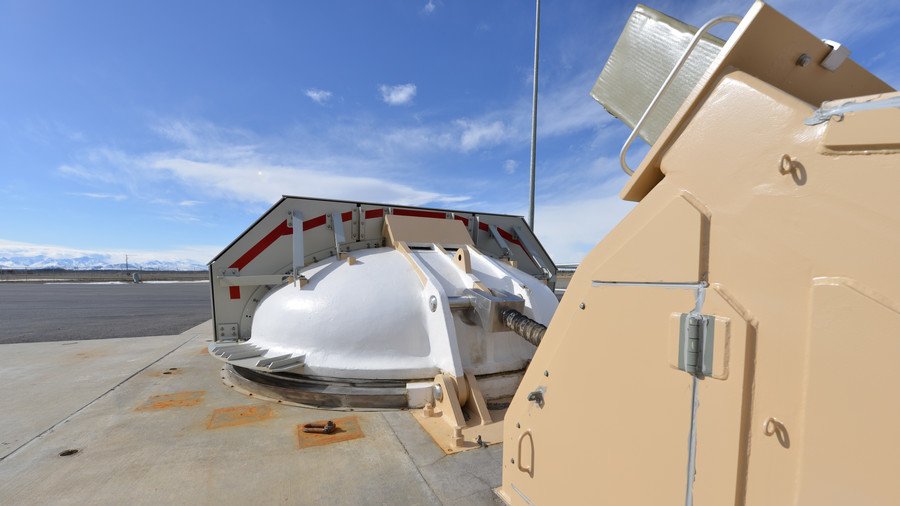US military outlines plans for space-based anti-missile assets demanded by lawmakers

US lawmakers want rapid development of space-based anti-missile assets and defense officials have given details of how they are going to meet the demands, which Russia sees as a threat to mutual nuclear deterrence.
Speaking at the Space and Missile Defense Symposium in Huntsville, Alabama, Gen. Samuel Greaves, the director of the US Missile Defense Agency (MDA) said he was "not averse" to developing and fielding space-based interceptor missiles. He also outlined how a future network of space-based sensors, designed to track missiles, may look like. Russia has already objected to the plans, which had been enshrined in the Fiscal Year (FY) 2019 defense spending legislation, saying it could lead to consequences as harmful as those of the Cold War nuclear arms race.
The US withdrawal from the Anti-Ballistic Missile (ABM) Treaty under the George W Bush administration and development of a national anti-ballistic missile system was arguably the tipping point, after which Russian-US relations deteriorated. Moscow sees this drive as an existential threat, fearing that the US may be tempted to deliver a pre-emptive nuclear strike hoping that the retaliatory launch by Russia would be intercepted and won't harm the US that much. Moscow was not satisfied with Washington's assurances that this would not happen, insisting that the mere existence of the capability was upsetting strategic nuclear balance.
As the relations between the two countries remain at their lowest point since the Cold War, the US lawmakers are pushing for further boosting of the national ABM system. The House version of the FY 2019 National Defense Authorization Act instructs the MDA to develop space-based assets, including a network of sensors, which would be able to better track flying missiles and potentially provide targeting information for interceptors.
Interceptors may also be placed in space, as opposed to on the ground, which could allow the shooting down of missiles during boost and mid-course phases. The drive in principle is not unlike the Strategic Defense Initiative proposed by the Reagan administration.
Gen. Greaves said his agency and the Pentagon were working together on plans for space-based interceptors, Defense News reported. He added that this part of the plan should not distract the MDA from its current priorities.
"The liability of the systems we have got in place today, we cannot take our eyes off of that; expanding our capacity and capability, developing our sensor suite and dealing with the advanced threat," he said.
Michael Griffin, the US Under Secretary of Defense for Research and Engineering, said designing and deploying space-based interceptors would be "a relatively easy technological challenge."
"The difficulty we have had in the past is centered around policy. It has not been the policy of the United States to deploy such systems," he said. Griffin added that the potential program would not be as costly as previously reported.
"I have made my own preliminary cost estimates on what systems would cost and I can't figure out a way to make them cost as much as some of the numbers I've seen tossed around the media," he said.
"I have seen such estimates," that have been in the tens of billions of dollars range, "and I don't believe them to be well-founded."
STRATCOM Commander Gen. John Hyten agreed with Gen. Greaves, saying the sensors network was currently more important to develop.
"The most important thing to do in the missile defense business is making sure you can see and characterize the threat," Hyten said. "If you can't see and characterize the threat, I don't care what kind of shooter you have, there is nothing you can do about it. So the most important thing is, you look at all the threats that are coming together, hypersonics, etc., is that we have to be able to see that threat."
The MDA chief offered a sketch of what the proposed space sensor layer can look like when deployed, and the challenges the agency faces developing it. "We know there is a difference in requirements between looking down to Earth and looking up at things that fly through space. Very different environment," he said.
The four-star general said the MDA has plans to coordinate its effort with the Defense Advanced Research Projects Agency (DARPA), which announced in May that its Blackjack program seeks to develop a global network of low earth orbit military assets, which would "provide infinite over-the-horizon sensing, signals and communications and hold the ground, surface, and air domains in global constant custody."
The Pentagon is expected to present its long-awaited Missile Defense Review soon. The document was supposed to be ready by the end of 2017, but was postponed several times. The latest missed deadline was mid-May.
Subscribe to RT newsletter to get stories the mainstream media won’t tell you.

















